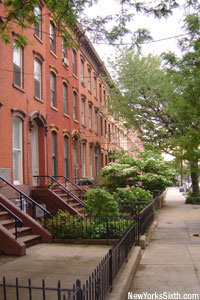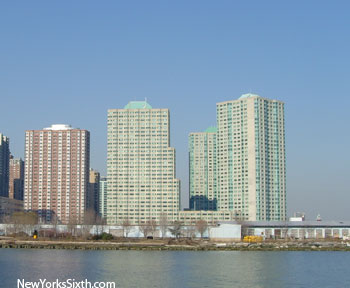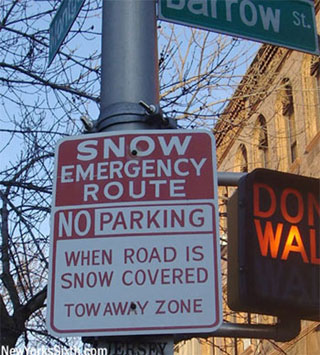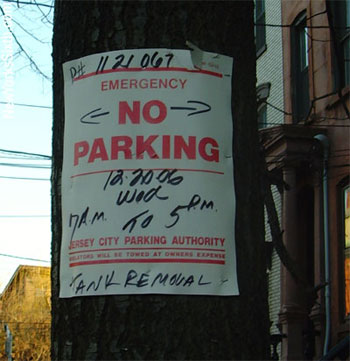Downtown Jersey City Neighborhoods
Historic Neighborhoods
Parts of downtown Jersey City are part of historic preservation districts. These districts were created by municipal ordinance in an effort to prevent the demolition or alteration of historic structures. The historic Preservation Districts refer to specific lots which fall under the ordinances domain, and generally the actual neighborhoods are considered to be larger than the preservation districts. The parking zones also correspond roughly with neighborhoods.
The historic neighborhoods include: Hamilton Park, Harsimus Cove, Van Vorst Park, the Powerhouse District, and Paulus Hook. The neighborhoods also have active community groups. With the exception of the Powerhouse District, a neighborhood consisting of historic warehouses and industrial buildings, the historic districts consist of three and four story brownstones from the 19th century.
Critics of the preservation neighborhoods claim that the oversight board is overly intrusive, making a simple procedure such as replacing a window into a long process slowed by red tape. However, the historic districts have indeed preserved the character of many of the older neighborhoods in Jersey City.

Newport
During the last century, most of the downtown Waterfront was factories, warehouses, and rail yards. Beginning in the mid 1980's however, an effort to revitalize the city was begun. The revitalization efforts required cleaning up toxic waste and removing the remnants of the railroads and old industry.
The waterfront can be broken into two main components: Newport in the north, and Exchange Place / Colgate Center in the south. Newport is a planned, mixed use community created by the LeFrak family. Newport residences are mostly mostly rental units, though there are currently two condominium towers. There are also multiple high rise office towers, and each building has ground floor retail. One of the earliest components of Newport was a suburban style mall.
Newport Center, the waterfront towers controlled by the LeFraks, is similar to but not identical to the Newport Redevelopment Zone. LeFrak built several low rise residential buildings adjacent to Hamilton Park. While they are part of the Redevelopment Zone, and owned by the LeFraks, these buildings are generally considered part of the Hamilton Park neighborhood. LeFrak's master plan illustrates the long term design of Newport. Below, several Newport residential towers.

Exchange Place and Colgate Center
The waterfront south of Newport largely consists of office towers. The Harborside Financial Center plan includes a total of 10 towers, half of which have been built and occupied mostly by tenants in financial services. The Colgate Redevelopment zone is a cluster of street blocks south of Exchange Place that includes the Goldman Sachs Tower.
In recent years, the rise in residential condominium prices and reduced demand for office space lead to the construction of several high rise residential towers in place of offices, including 77 Hudson Street.
Liberty Harbor North
Liberty Harbor North is a planned, mixed use community between the Van Vorst Park historic district and the Morris Canal. The northern section of the development attempts to seamlessly integrate with the surrounding brownstone neighborhood with low rise homes and street level retail. As the development continues south, mid-rise and high-rise towers will be constructed, creating an evenly rising skyline away from the existing low-rise neighborhoods.
Labels: Guide





